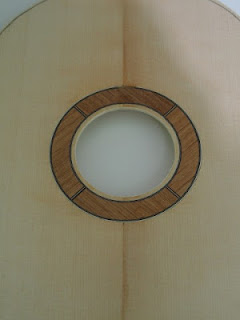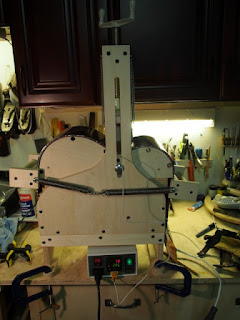Most people who build guitars will tell you it is a bit of an obsession. I guess I am no different in that regard, I've been bitten by the bug..
Building something that is both beautiful and beautiful sounding is very satisfying.
So the next guitar is a small tenor based on a Regal tenor guitar from the 1920's with a 21" scale length, 12 fret to the body and floating bridge and tailpiece.. I calling it a Celtic Tenor as I plane to try to optimize it for GDAE tuning as a sort of octave mandolin.. It should work well for Celtic style playing.
The Shape will be that of the Regal but I plan on changing a few things most notably the materials
Back and sides will be Koa, with and Englemann Spruce top, the neck will be Cedro (Spanish Cedar), with and Ebony fretboard, most of the trim will be Ebony..
 |
| The Raw Material |
I'll be doing a few things different in the build process as well since I think I have a few methods in mind that work better for me.. First off I'll be using the universal mold I made, I don't have the space to keep making separate molds for each guitar type I make.. It also has what I hope are a few other advantages this I'll talk about as they come up.
 |
| Template used to set up mold |
.JPG) |
| Template removed |
.JPG)
.JPG)
.JPG)
.JPG)
.JPG)
.JPG)
.JPG)
.JPG)
.JPG)
.JPG)

.JPG)
.JPG)
.JPG)
.JPG)
.JPG)
.JPG)
.JPG)
.JPG)
.JPG)
.JPG)
.JPG)
.JPG)

.JPG)
.JPG)
.JPG)
.JPG)

.JPG)
.JPG)
.JPG)
.JPG)
.JPG)
.JPG)



.JPG)
.JPG)
.JPG)
.JPG)
.JPG)
.JPG)


.JPG)
